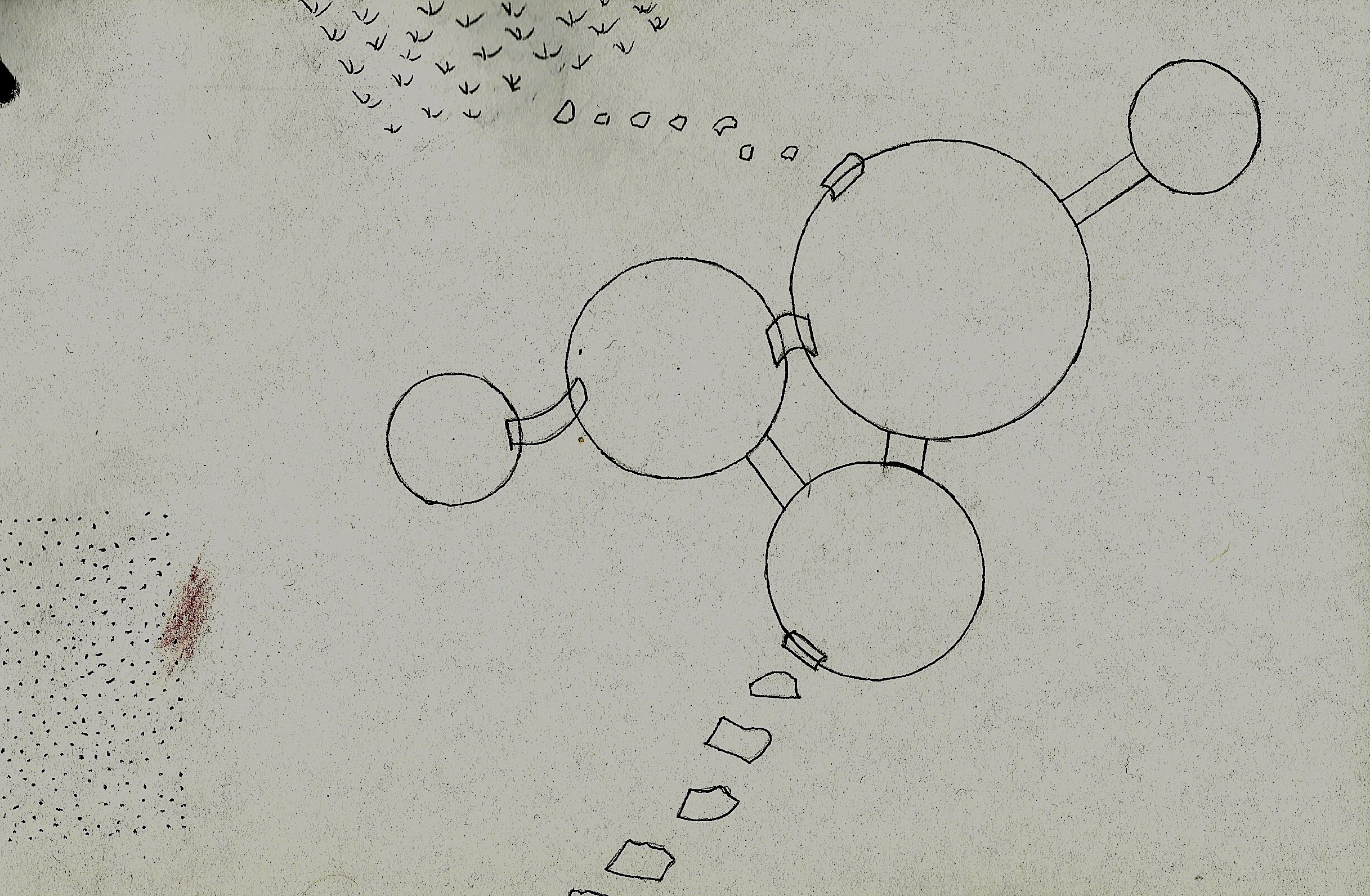

Most of the buildings still standing on the Lye Planet are single-storey, circular constructions partially set into the ground. Dwellings often consisted of a number of these circles connected by tunnels and ladders, built for storage and shelter from severe weather. Usually these were shared between inhabitants of a settlement, but were not focal points for community or recreation: rather, such congregations and performances took place in the outdoors. A key exception to this seems to have been artefact-making, given the prevalence of writing materials and work surfaces discovered in secluded indoor corners. This is perhaps why most of the preservative vats have been discovered within or alongside these shelters, although there are examples of nomads assembling vats (e.g. LPA155.031.29) and leaving them in remote areas.
The need for ‘shelter’ took on new significance with the increasing hostility of the planet’s environment during the Decline, with wildly different outcomes for home-building and patterns of migration. Kiran Leonard has argued that the text of LPA210.045.42 and the state of the building in which it was found demonstrate an almost fanatical urge by the author to preserve the settlement in a perfect, static form, to transform it into a constant shelter. In his essay “Unwritten Virtues” he notes other changes to shelter during this time:
‘…in the initial stages of the Decline, it is believed that many former family homes became transient resting stops for an increasing number of solitary nomads, who took to journeying from village to village in pursuit of knowledge or enduring distraction. Others still were deliberately transformed in mysterious rites. The team reports discovering empty shells of buildings, surroudned by the buried remains of their contents in methodical but indiscernible patterns; homes condensed into smaller constructions of re-sculpted possessions in metal and cloth; domestic walls lined with interminable hieroglyphs, diaristic recollections and confessions bearing little relation to historical events as researchers understand them, nor to objects in the house found inexplicably mangled and charred.’
In many ways, this search for a shelter from the surrounding world has some parallel with the emergence of individual modes of expression, both of which can be interpreted as responses to the gradual atomisation of society, language and common experience which the Decline exacerbated.